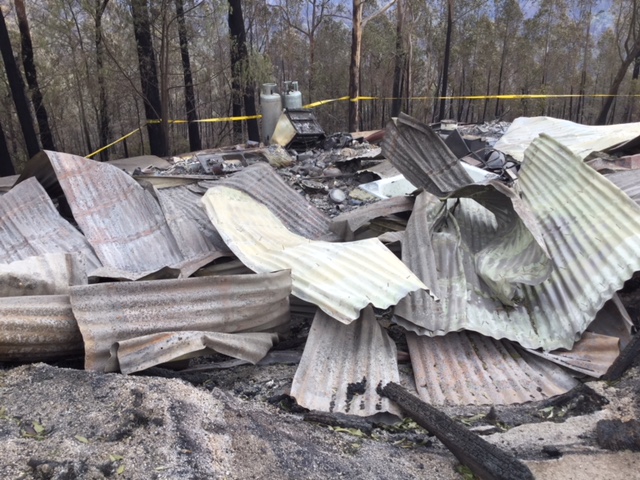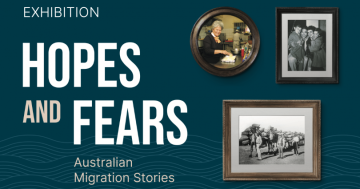
A destroyed home after the Yankees Gap fire in 2019. Photo: Bushfire Survivors for Climate Action.
The NSW Government committed one billion dollars in early January for bushfire relief efforts, while the Australian Red Cross reports $127 million has been donated to aid recovery. But accessing funds for individuals who have lost a house to fire or suffered property damage is not always easy or immediate.
I learned this first hand this week as I tried to help my parents after fire went through their Tantawaglo property last weekend. We were lucky, the house still stands, but everything else has burnt – carport, sheds, caravan and gardens.
Feeling helpless, I started making calls to find out if they could access any grants or government payments until the insurance claim comes through, allowing them to focus on the cleanup and recovering from the shock.
What I discovered was that specific funding is available through services NSW – funding for stock feed and to replace fences, lost income and soft furnishings damaged by fire, smoke or soot – but general funds, to be used as fire victims see fit, are harder to come by.
Those who have suffered total loss often report that money is the most useful donation.
Louise Smith lost her home in the 2018 Tathra fires.
“People gave me things, which was lovely, but I didn’t have anywhere to put them,” she says.
“I remember the Red Cross gave out gift cards, which we could use as a credit card to shop. That was really helpful.”
The bushfires this summer have led to many people turning to personal fundraising platforms to fill the need, according to GoFundMe Australia’s regional manager Nicola Britton, who reports that 118 GoFundMe campaigns have launched just for the Cobargo area since New Year’s Eve and 70 launched for the Bateman’s Bay area in the same time period.
“In many cases, we’re seeing GoFundMe pages launched for needs that fall outside of traditional government and charity support, created on behalf of families and communities who’d lost everything, often left with limited shelter and resources and requiring immediate support to get back on their feet,” Ms Britton says.
There are general funding options available through local councils and organisations such as the Red Cross but applying for them can require the kind of determination some people in shock don’t possess.
One advantage of personal fundraising is that someone else can launch and manage a campaign for fire victims.
Dylan Birchall, who lives in Melbourne, did just that for his brother, sister-in-law and their two kids after their house in Quaama was burnt on New Year’s Eve.
“I felt totally powerless. I knew they were using the small amount of savings they had on paying for a motel,” Dylan says.
His goal was to raise enough to replace his brother’s work ute so the family could return to earning their normal income as soon as possible.
“I had no experience with accessing insurance claims or emergency funding but I assumed it would take a long time and I knew they needed money soon,” Dylan explains.
Three days after the campaign was set up the family was able to draw from it, and a week later his brother’s new work ute was paid for.
Dylan was blown away by the number of people who wanted to support his brother’s family.
“Seeing those donations come in was really emotional. I was in tears for days,” he shares.
“People from our past came out, all our American relatives we hadn’t seen for years. A guy who sat next to my mom in the Bronx in 9th grade donated!”
Dylan says that being able to donate directly made powerless people watching the fires unfold on the news feel empowered.
“We connect to individual stories, there’s such power in narrative.”
That individual appeal has reached $88,000 to date but Dylan says that being able to tell his brother’s story in an appealing way was one reason the campaign had been so successful.
“GoFundMe is a great tool but it’s not perfect and echoes the inequality in society,” he says.
“Privileged people whose communities are wealthy and tech-savvy will attract more donations than others.”
But otherwise, victims seeking assistance are back to square one – on the phone to service providers trying to prove they meet the criteria for funding.
Original Article published by Elka Wood on About Regional.












